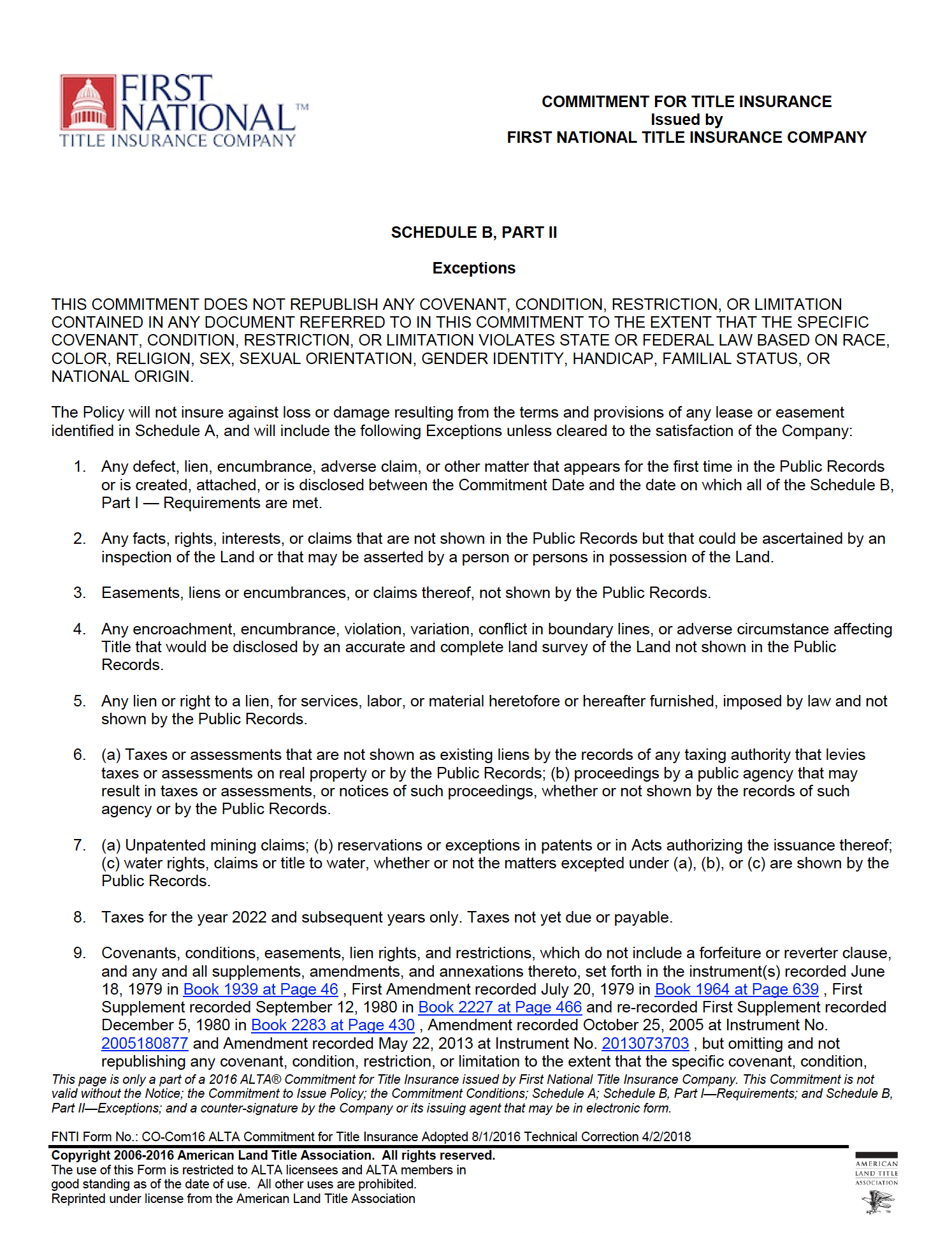Title Commitments
What is a title commitment?
A title commitment is a document issued by a title company that outlines the conditions under which it is willing to issue a title insurance policy for a particular property.
The title commitment includes important information about the property’s title history, such as ownership, encumbrances, liens, easements, and other matters that may affect the property’s ownership rights. It is based on a thorough examination of public records, including deeds, mortgages, tax records, and court documents.
The title commitment serves several purposes:
- Identifying title issues: It highlights any potential problems or issues with the property’s title that need to be addressed before the sale can proceed. This can include unresolved liens, conflicting ownership claims, or other restrictions that may affect the buyer’s rights to the property.
- Title insurance coverage: The commitment specifies the conditions under which the title company is willing to provide title insurance coverage for the property. It outlines the coverage amount, policy exclusions, and any exceptions or special provisions that may apply.
- Clearing title defects: If the commitment reveals any title defects, the buyer and seller can work together to resolve them before the closing. This may involve paying off outstanding liens, obtaining releases or waivers from previous owners, or resolving boundary disputes.
It’s important for both buyers and sellers to carefully review the title commitment and address any concerns or discrepancies with their respective attorneys or real estate professionals. The commitment provides valuable information about the property’s title status and helps ensure a smooth and secure transfer of ownership.
How to read a title commitment?
- Schedule A: This section contains important information about the property, such as its legal description, ownership details, and the proposed insured parties.
- Schedule B-I: This section lists the requirements that need to be fulfilled before the policy can be issued. It may include conditions such as:
- paying off existing mortgages or judgments
- correcting errors in the chain of title
- resolving any outstanding liens or encumbrances.
- Schedule B-II: This section identifies any exceptions or exclusions from coverage such as:
- Mineral and water rights
- Utility and access easements
- Homeowner Association Covenants and Restrictions
- Existing Plat restrictions
It outlines potential issues or defects in the title that will not be covered by the insurance policy.
Reading a title commitment requires a good understanding of real estate transactions and legal terminology. If you’re unsure about any aspect please don’t hesitate to ask. We’re happy to help you understand your title commitment, and want to make sure to clarify any questions you have prior to closing.



